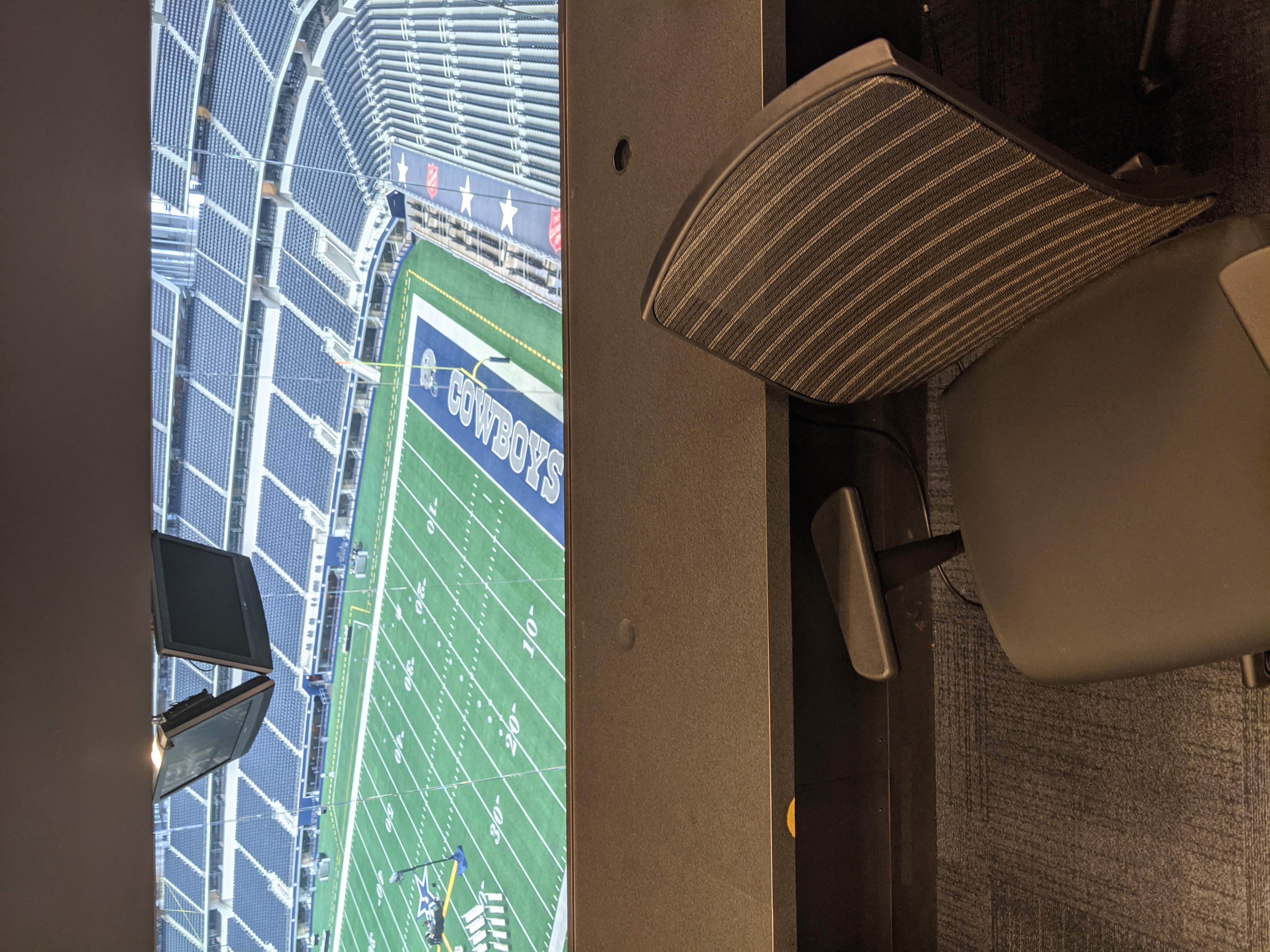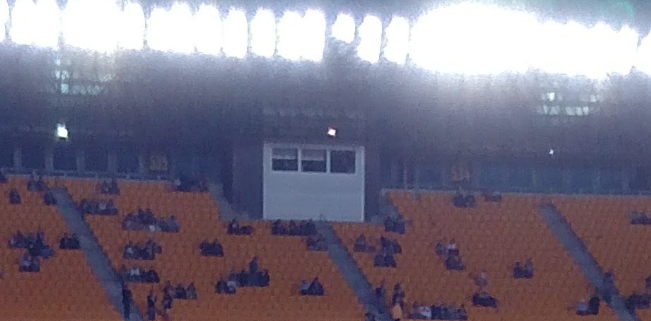One of the top experts in early football rules history Timothy P. Brown joins us on the discussion to research the evolution of the football field press box as well as other communications on the sidelines.
Press Box History
The Press Box
We all read the the internet, newspaper, and other media posts abouth the coverage of a football game the moring after. Often times the journalists reporting on the contests are perched high above the playing field and stands with a near bird's eye view of the game. Now adays the areas for the press are enclosed luxury spaces, decked out with all of the finest modern technologies such as temperature controlled air, lighting, electricity, the internet and more.

The view from the press box at Dallas' AT&T Stadium on a Tour I took in 2021 demonstrates the luxury that modern day media people are afforded.
It was not always that way for people of the press which as Tim shows in his post had humble beginnings of side line tables and slowly evolved into seats int he stands with covers, to full blown enclosures.
The first press boxes in American football were simple affairs, often just a wooden platform with a few chairs. They were located on the sidelines, next to the players and coaches. However, as the sport grew in popularity, so did the need for more spacious and comfortable press boxes.
In the early 1900s, press boxes began to be moved to the top of the stadium, where they could offer a better view of the field. They were also enclosed to protect the media from the elements. The first enclosed press box was built at the Polo Grounds in New York City in 1912.
In the 1950s, press boxes began to be equipped with electricity and telephones. This allowed the media to communicate with their offices and file their stories more quickly. In the 1960s, television began to play a major role in American football, and press boxes were equipped with television cameras and other broadcasting equipment.
Today, press boxes are an essential part of any American football stadium. They are typically located in the upper deck, behind the home team's bench. They are large and spacious, with comfortable seating and all the amenities the media needs to do their job.

Heinz Field in Pittsburgh depicting a small extruding press box jutting out of the luxury box seats, in 2018.
More About Our Guest
We are so thankful to have Tim on to share his knowledge on this interesting facet of football stadiums. Here is more on what Tim does and has done in gridiron research...
Football Archaeology
Timothy Brown's FootballArchaeology.com is a website dedicated to preserving pigskin history. digs into gridiron history to examine how football’s evolution shapes today's game. The site has a variety of articles, history of football word origins, and Daily Tidbits, which have a daily football factoid that shares some quite interesting items and aspects of the gridiron in a short read. They preserve football history in a very unique way Visit the site at Today's Tidbits.Timothy P Brown
Tim Brown, one of the foremost experts on early college football, is the host and founder of FootballArchaeology.com. Tim's love of the gridiron's past goes beyond just the website. Mr Brown, to date, is the author of three books on football history, appears on various football history podcasts, and has been quoted in articles by The Athletic, The Chicago Tribune, and other publications. He guest authors articles on UniWatch, and his research on the 1920s West Point Cavalry Detachment teams contributed to All American: The Power of Sports, currently on display at the National Archives Museum in Washington, D.C.His books include: Fields of Friendly Strife; How Football Became Football: 150 Years of the Game's Evolution; and Hut! Hut! Hike! A History of Football Terminology, which explores the history of football’s words and expressions and how they became connected to the game.
Credits and Thanks
The images above are from George Clark at Notre Dame Stadium, and Darin hayes from AT&T stadium in Dallas, Texas and Heinz Field in Pittsburgh Pennsylvania.
Special thanks to Timothy P. Brown for sharing his research and discovery of football history with us each week here nd daily on FootballArchaeoloogy.com
Related Stories
Here are some other items that cover portions of football field equipment and features that you might also find interesting to check out.


